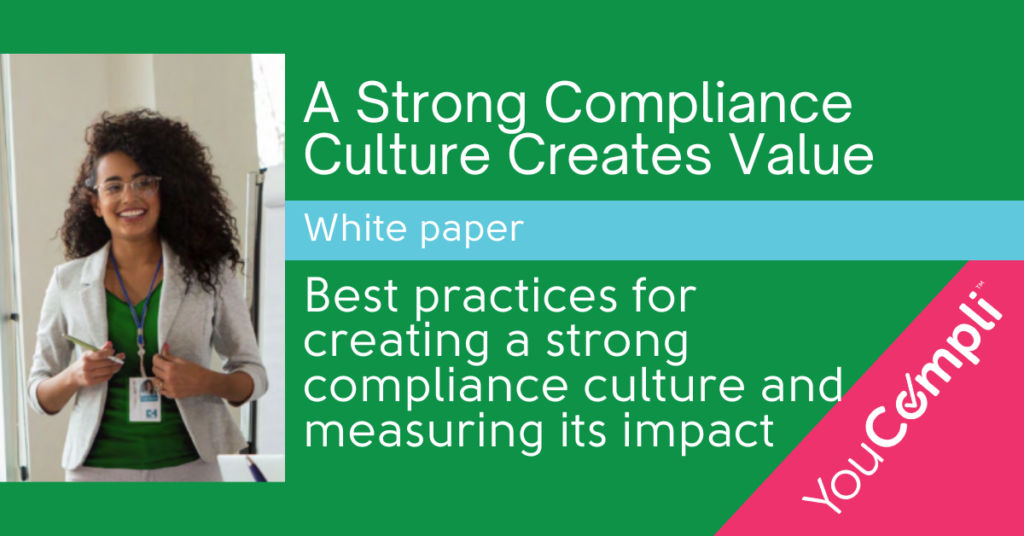
Minimize Risk and Add Value Through Standardization and Metrics
A strong compliance culture is important in healthcare organizations because so much of what we do is dependent on the people and the processes. Without standardized processes, there are greater opportunities for risks and problems to occur.
During my 35 years in behavioral health, I’ve experienced how a compliance culture minimizes risk through standardizations and by building in predictable processes for organizations. Establishing a strong compliance culture in behavioral health and showing how Compliance adds value includes four activities:
- Using the Office of the Inspector General (OIG)’s seven elements
- Making the most of metrics
- Being an effective influencer
- Emphasizing education
I’ll explore these activities in a two-part series. Below, I discuss using the OIG’s seven elements and making the most of metrics. I’ll follow up with a look at being an effective influencer and emphasizing education.
Stigma and complexities in behavioral health
The stigma and the complexity of what we deal with in behavioral health present compliance challenges that other healthcare organizations may not face. Because of these challenges, behavioral health organizations need to minimize risk for the organization through standardizations and building predictable processes.
Stigma
Behavioral health is unique in that we have the stigma that goes along with our work. The population we serve has mental health and addiction issues, plus co-occurring medical, legal, educational, work, and family issues.
Everyone – our patients and their families as well as our staff and the regulators – has a judgment or a criticism of what we do. There’s a lack of understanding around mental health and addiction, which generates fear and uncertainty.
Lack of clarity
In behavioral health, our collective focus over the years has been on quality and risk management. The language of compliance is a little bit newer, whereas in healthcare it’s been a more long-standing process.
The biggest challenge in behavioral health is that we don’t have clarity yet on the differences between compliance, quality, risk, and safety. We’re still trying to define the differences and the commonalities and where they overlap.
Some behavioral health organizations think they have compliance covered because they do quality or safety. In reality, they’re duplicating efforts because they’ve built separate silos rather than truly integrating.
Lack of consistency
In behavioral health, we have higher acuity of patients, and we have more regulatory requirements. When I started in the field 35 years ago, we had the mental health unit, the alcohol unit, and the drug unit; now, they’re all one unit.
We’ve come a long way, with more evidence-based practices and more research-based approaches. But we lack a common approach to measuring outcomes and what works as well as consistency from state licensing and accrediting bodies.
There are millions of ways to do a behavioral health treatment, and everyone has a different set of rules to negotiate. Whereas healthcare, in general, has standardized practices and treatments, and therefore a common language and approach to compliance.
Establishing a compliance culture in behavioral health
Behavioral health’s unique challenges mean these organizations are ripe for a strong compliance culture. These two tips can help you start navigating behavioral health’s complexities and show how Compliance adds value by minimizing risk through standardization and building in predictable processes.
1. Use the OIG’s seven elements
Using the OIG’s seven elements in behavioral health is still pretty new. The reality is a lot of behavioral health programs are rather unsophisticated in their policies.

Many behavioral health organizations still have their polices in big binders; they haven’t yet embraced technology to manage how they approach compliance. It’s partly because the focus in behavioral health has been on working with patients, not building infrastructure.
You can use the OIG’s seven elements almost as a checklist; think of the seven elements as building benchmarks. Start by assessing which of the elements you already have.
Most behavioral health organizations find that they have the seven elements in some iteration. But they haven’t been organized in a work plan or an annual assessment.
If you’ve met all seven elements – even if it’s minimally, as long as you have something in place for each of them – you have a good foundation for a compliance program. With the seven elements in place, you can build over time to create a strong culture.
Start by taking a whole look at your organization. It’s a neat exercise to go through with your colleagues to look at all the things they’re doing – staffing, policies, standard operating procedures, documentation – and have them see the opportunities for simplification and standardization.
2. Make the most of metrics
We don’t always get the credit for the value Compliance adds. It’s partly because our job involves preventing, finding, and fixing issues. When we do our jobs well – preventing issues – nobody sees them.
Yet our impact is tangible. By building in predictable processes, we’re creating healthier cultures that are more compliant and more financially stable, with fewer fines and lawsuits and less wasted money.
To help show Compliance’s impact, remember that data is our friend. Several measurements can help gauge the effectiveness of your culture – and show how Compliance is making a difference.
An example is conducting a pre-test and a post-test. I always do this, whether it’s a new employee orientation or an annual training.
In my specific niche of behavioral healthcare, we’re accredited by the Joint Commission and their standards change twice a year. If you’re also accredited by CMS or other state regulatory agencies, that’s a lot to track.

I’m a big fan of building policies that embed the regulation into it. So, if there’s a rule on, for example privacy or drug testing or a medical process, the policy says, ‘Here’s what CMS says on that.’ It shows employees the regulatory rationale behind the policy to make it more motivating to comply than simply because it’s what Compliance said to do.
Embedding regulations into the organization’s policies is also helpful if there’s an audit or a state visit. Employees can point to their process being aligned to a specific regulation and show how that alignment has led to fewer issues over a period of time.
Leverage existing data
Behavioral health organizations have existing data that can help assess the health of your culture. Look at our turnover. Are staff leaving? Are they staying? How long are they staying? Also look at employee survey data and employees’ feedback. What could we do better? What do employees like, and how can we keep those things?

Consider patient data and the surveys patients complete too. Are our patients coming back? Are they referring new patients to us?
You can also look at incident reports to see if incidents have gone down. The key is using data to help show Compliance’s impact and finding a trusted person in the organization to help sell your story.
It may be a board member, an executive, or a line person who really understands compliance. Having advocates outside of Compliance who support your efforts helps show the value you’re adding to the organization.
Value of a strong compliance culture
The stigma and complexities of behavioral health underscore the need to minimize risk for these organization through standardizations and building in predictable processes. It can be challenging to navigate the complexities.
Yet you can successfully begin creating a healthy culture by using the OIG’s seven elements and making the most of metrics to show how Compliance adds value. Prioritizing these two activities is critical to enabling behavioral health organizations to build standardized processes that help minimize risk.
Watch for Part II, where I’ll examine two more key activities: being an effective influencer and emphasizing education. Together, these four areas can help you establish a strong compliance culture in behavioral health and show how Compliance adds value.
Maeve O’Neill is the national compliance director for Circa Behavioral Healthcare Solutions, has worked in behavioral health for 35 years. Maeve has a passion for quality and safe care as well as happy and healthy staff. A former behavioral health surveyor with The Joint Commission, she is committed to excellence.
Download Best Practices for Creating a Strong Compliance Culture and Measuring its Impact Now

Never miss an article from YouCompl!
Register for email from YouCompli.

